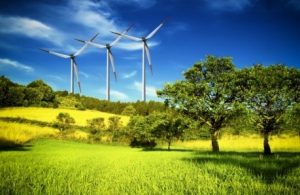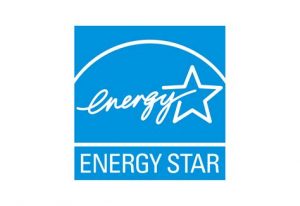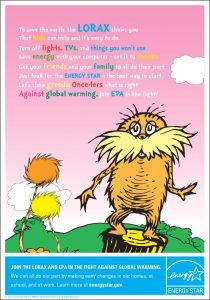Helping Children to Save Energy: A Guide for Parents
 Author: Todd L Sack MD
Author: Todd L Sack MD
It’s easy and smart to help your children to save energy. Developing in them good habits will money for your household budget and will set young people on their way to conserving resources throughout their lives. Studies show that many youths are worried about how climate change will affect their futures. When you help children to reduce energy use, you may be lowering their climate change fears by enabling them to help solve the problem.
Many of the ideas here come from Emily Hodges with Comfort Up, an American company that sells energy-saving heating and cooling systems for homes and businesses. You’ll find Comfort Up’s contact information below.
First, Be a Fun Example for Children
 Most children learn best by seeing what we adults do, and then by copying us. Let your children see you turning off lights and computers when you leave a room, wearing a sweater in winter rather than turning up the heater thermostat, and wearing lighter clothes rather than cranking up the air conditioner in summer. Let them see you make other wise choices such as using water carefully, buying plastics only when absolutely necessary, eating less red meat (meat from four-legged animals), always recycling, and selecting energy-efficient vehicles & appliances.
Most children learn best by seeing what we adults do, and then by copying us. Let your children see you turning off lights and computers when you leave a room, wearing a sweater in winter rather than turning up the heater thermostat, and wearing lighter clothes rather than cranking up the air conditioner in summer. Let them see you make other wise choices such as using water carefully, buying plastics only when absolutely necessary, eating less red meat (meat from four-legged animals), always recycling, and selecting energy-efficient vehicles & appliances.
Even young children can learn about setting home thermostats to 68° degrees F. (20 ° C.) for winter heating and 74° F. (23 ° C.) for summer cooling. If you are a family that drives a lot, try walking to visit nearby shops, parks and friends. Talk to your children as you do these things and praise their own resource-saving ideas and actions.
Finding ways to save energy can be a regular game played by your family. The website www.homeselfe.com tells us of a fun game of “I Spy” for energy: “Who doesn’t love a good old-fashioned game of ‘I Spy?’ ” The challenge is to spot all of the energy-saving ideas around the house or while out on errands. HomeSelfe offers a free five-minute energy audit and many tips for saving money in the home.
Talk Renewable Energy
The word “energy” is derived from the Greek language word for “work”. This is because the energy we use does work for us. When we ride in a car, the energy to operate the car is doing the work so that we don’t need to walk to our destination
By around six years of age a child can understand and appreciate the difference between renewable and non-renewable energy. When electricity is made from sunshine (also called “solar power” or “photovoltaic power”) or from the wind (“wind power”), we are using renewable energy since the sun and the wind will continue to be available for at least the next few billion years. By contrast, non-renewable energy comes from underground and must be burned to be used.  These are the fossil fuels such as coal, natural gas, gasoline and diesel fuel, considered to be non-renewable because once we burn them, they are gone.
These are the fossil fuels such as coal, natural gas, gasoline and diesel fuel, considered to be non-renewable because once we burn them, they are gone.
Children will be happy to learn that renewable energy will always be available and that it is clean. Using renewable energy does not require fire or burning; no harmful smoke or air pollution is created. Air pollution from the burning of fossil fuels is a common cause of asthma and other breathing problems in children and adults, especially for people living in cities. If your children have asthma, explaining that their difficult breathing may be due to fossil fuels will help them to understand their episodes of illness.
Renewable energy produces very little of the greenhouse gases, such a carbon dioxide, that are changing the climate with global warming. You can choose to use renewable energy for your home by asking your electricity company to allow you to buy renewable energy rather than fossil fuels energy. You can even consider buying or leasing solar panels for your roof at home to make your own electricity (photovoltaic electricity) or hot water (solar thermal).
Become an Energy Star Family
Dr. Seuss and the U.S. Environmental Protection Agency teamed up to create fun posters, games and stickers with Lorax and other great Dr. Seuss characters. These are suitable for children as young as 4 years old and as old as 12. We list the links to these at the bottom of this blog.
Tell your children about how appliances and other machines gobble up energy. When you go shopping for new appliances and machines, you will find labels on appliances that tell you how much energy will be used. In the United States, these are the Energy Star ratings; appliances sold in Europe carry the EU Energy Label. Energy Star or EU Energy Label products may be a bit more expensive to buy but will be far less expensive to operate and produce less air pollution. Look for an energy use label on every product you buy that uses energy, including the big machines such as air conditioners, stoves and refrigerators. You can read about Energy Star and other money-saving ideas at the free E.P.A. website, www.energystar.gov . 
Ideas for Older Children
We do not want young children to play with electric appliances, heaters, or plugs. But when they are old enough to be responsible, encourage kids to turn off appliances and to unplug electric chargers when they are not being used. Many modern devices continue to use a small amount of energy even when turned off, a phenomenon called “phantom load”. Like a ghost that seems alive when it is not, the appliances continue to use tiny amounts of energy. This is stopped by unplugging the appliance entirely. Some families will plug several appliances into a single power strip, allowing them to turn off power to every appliance with a single switch.
“Phantom load” is the energy many electric devices use even when turned off. |
Children can save energy as well by taking shorter showers and using less hot water. And a typical shower requires just seven gallons of hot water compared with 25 gallons for a bath. Older kids can ride their bikes or walk instead of being driven.
Taming Heating and Cooling Costs

Teach your child to turn on a ceiling or floor fan, or to open a window, instead of blasting the air conditioner. How about those electric “space heaters” for cold winter nights? In general, these are not great choices because they are energy hogs, meaning they use a lot of power compared to most home heating systems.
Your home’s heating and cooling system (HVAC) can fascinating to children. Sadly, most homeowners never learn all the money-saving features of their HVAC . We want you to take advantage of every feature of your system. If your home has a modern multi-zone HVAC system, you can program the temperatures in each room to avoid wasting energy. Allow each child to manage their room’s own temperatures and energy use.
It’s easy and smart to help your children to save energy. Developing in them positive habits saves your household budget and sets young people on their way to conserving resources throughout their lives.
Fun, Free Resources from the U.S. Environmental Protection Agency’s ENERGY STAR program *
- “Lorax Needs You”, a 2-page activity:
- “Do-It-Yourself Seuss”, a 2-page activity:
https://www.energystar.gov/ia/partners/publications/pubdocs/Lorax_ENERGY%20STAR_Activity%20Book.pdf
- “Join the Lorax”, a 6-page activity book:
https://www.energystar.gov/ia/partners/publications/pubdocs/Lorax%20Activity%20Book%206%20pages.pdf
- “Join the Lorax #2”, another 6-page activity book:
https://www.energystar.gov/sites/default/files/tools/LoraxActivityBook-webPrint_041615_508v2.pdf
- “Join the Lorax Coloring Book”, a 6-page activity book:
- “Team Energy Star Games”, an 11-page book of simple games for families about saving energy and water:
https://www.energystar.gov/ia/products/globalwarming/downloads/Energy_Efficiency_Games.pdf
- “I’ve Helped to Protect the Climate Stickers”, a single page with 6 bright stickers:
https://www.energystar.gov/ia/products/globalwarming/downloads/ES_DAY_SmallSticker_3x4.pdf?fd51-9671
- Lorax Helper Poster, a 1-page poster for a child’s room:
- “Lorax Ideas”, a single page with simple, fun ideas:
https://www.energystar.gov/sites/default/files/asset/document/Lorax_PSA_HighRes.pdf
*These resources were accessed from the internet on November 25, 2019. We thank the E.P.A.’s Stephan Sylvan for telling us about these fun items for families.
About the Contributors:
Dr. Sack is Editor for My Green Doctor, a popular, free environmental sustainability service that is helping hundreds of healthcare offices to save money and to share sustainability and climate change ideas with office colleagues and with their patients. My Green Doctor is a partnership of eleven health professional societies. Register for free at www.MyGreenDoctor.org/ .
Emily Hodges is a Marketing Communications Specialist for Comfort Up, a provider of heating and cooling systems that can reduce energy costs by 25-50%. https://comfortup.com/


